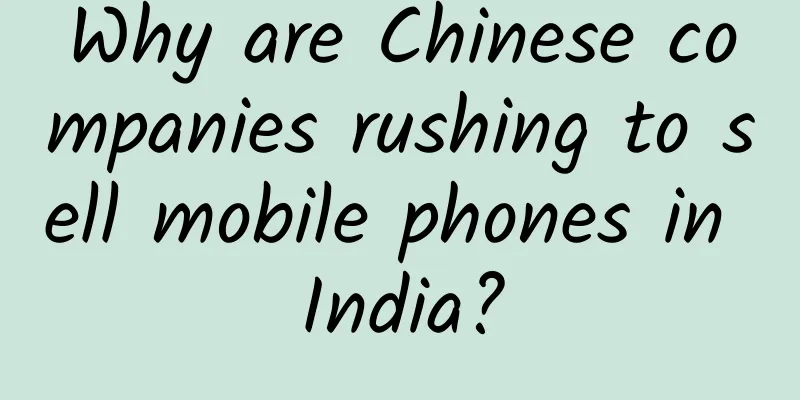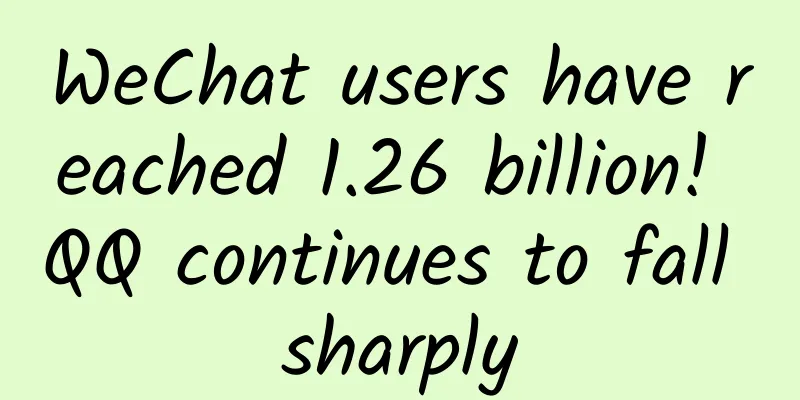Why are Chinese companies rushing to sell mobile phones in India?

|
India, on the other side of the Himalayas, is becoming another "dream land" for Chinese mobile phone manufacturers. As the domestic smartphone market in China becomes increasingly saturated, Chinese smartphone manufacturers are eager to expand their market by internationalizing. They all chose India as their first destination. India has a large population, a fast-growing economy, and is in the process of transitioning from feature phones to smartphones. All of this is too similar to the Chinese market five years ago, making people feel like they are seeing the perfect conditions to create another business miracle. However, although the Indian market is "attractive", it is also very unique. For this "journey to the West" that requires crossing the Himalayas, can Chinese mobile phone manufacturers who have "worked hard to practice seventy-two transformations" "face eighty-one difficulties with a smile"? Smartphone penetration in India is less than 10% Sammy from India often travels between Beijing and New Delhi for work. In the past one or two years, more and more friends have asked him: How are Chinese mobile phones? Because they want to buy one. "Chinese mobile phones are beautiful, have large screens, are easy to use, and most importantly, are very reasonably priced." Sammy told the reporter of China Economic Weekly that these are the reasons why Chinese mobile phones are particularly attractive to Indians. "The consumption level in India is not as high as that in China, and most Indians cannot afford iPhones." Sammy said that international brands such as Apple, Samsung, and Nokia are very well-known in India, but their products are relatively expensive after all; while local Indian mobile phones are very cheap, but their appearance and functions are not that good. As Chinese mobile phones begin to be promoted in India, more and more Indians are beginning to accept Chinese mobile phones with better cost performance. Sammy said that most Indians now still use feature phones that can only make calls, but as India begins to build 3G and 4G networks on a large scale, more and more Indians are starting to buy smartphones that can access the Internet and have richer functions. According to a report by market research firm Gartner, the global smartphone sales growth rate in 2016 will be only 7%, which will be the first single-digit growth. However, in this context, India has become the only bright spot in the world. Gartner predicts that the sales of smartphones in India will increase by 29% in 2016, and this double-digit growth momentum will be maintained at least until 2018. According to statistics from the Telecom Regulatory Authority of India and IDC, the number of mobile phone users in India has exceeded 1 billion, but the penetration rate of smartphones is less than 10%. These two sets of data are full of the smell of money. In fact, in the past few years, especially in the past one or two years, almost all domestic first-tier mobile phone manufacturers, such as Gionee, ZTE, Lenovo, vivo, OPPO, Huawei, Xiaomi, LeTV, etc., have begun to focus on the Indian market and stake out their territory. According to data from market research firm Counterpoint Research, in 2015, Chinese mobile phone brands had a market share of 18% in India, double that of a year ago; while the market share of Indian local brands dropped from 48% in the previous year to 43% in 2015. Title sponsorship, sponsorship, and hiring of big names, There is always a trick that works every time Data from market research firm GFK shows that the number one in the Indian smartphone market is South Korea's Samsung, followed by three Indian local brands that mainly focus on low-priced models in the second to fourth places, and the fifth place is the Chinese brand Gionee. Among the top 15 are China's vivo (seventh), Lenovo (tenth) and OPPO (thirteenth). "India has 70% of its population under the age of 30, with nearly 1 billion people under the age of 30. This market opportunity is huge. We are ready to make the Indian market another market that even surpasses China. Because in the next 10 years or so, the Indian market will definitely be the world's largest market," Liu Lirong, chairman of Gionee Group, told a reporter from China Economic Weekly. "In the past, Chinese mobile phone brands were not well-known in India, but in the past one or two years, Chinese mobile phone brands have sponsored IPL and many Bollywood movies as well as popular TV variety shows, which has made many Indians know them all of a sudden," said Sammy. Sports marketing and entertainment marketing are indeed the best cards that Chinese mobile phone manufacturers are best at playing, and they have also become the most direct and effective fast channel for Chinese brands to enter the local Indian market. IPL, the Indian Premier League, is the most influential sporting event in India. The sporting event that Indians pay the most attention to is not the Premier League or the NBA, but the IPL. In India, more than 750 million people play cricket at least four times a year, accounting for 62% of the country's total population. As many as 85% of people follow cricket events through television or other media. Vivo replaced Samsung as the title sponsor of the IPL in 2016 and 2017, while Gionee replaced Nokia as the main sponsor of the IPL champion team KKR for three years. In addition, Gionee also sponsored popular local variety shows in India similar to "The Voice" and "Got Talent". OPPO hired Indian "king-level" film actor Hrithik Roshan and fashion guru Sonam Kapoor as its brand ambassadors. The market that entrepreneurs love and hate "The Indian market is a market with huge losses and huge profits, which makes entrepreneurs love and hate it. More than 90% of foreign companies end up with tragic losses here." The person in charge of Gionee's overseas market told the reporter of China Economic Weekly that it is not easy to "do business" here, and it is even more difficult to "build a brand". When going global, many Chinese companies often think like "trading companies". They don't want to invest or integrate into the local community, but just want to sell products with their company logo printed on them and then make money and go home. This is not internationalization at all, and it is even more unfeasible in a market as large and complex as India. For Chinese companies that want to tap into the Indian market, localization is a compulsory course that they must take even if they have to pay a high tuition fee, because only by passing this course can they overcome the two major challenges of the Indian market. The first is channels. According to the Indian mobile phone market research report released by Ipsos: 90% of the mobile phone sales channels in India cannot be counted, because most of the mobile phones in India are sold through "unbranded stores", while chain electrical appliance stores and large electrical appliance stores can only occupy less than 10% of the market share, which makes the channels in the Indian market very complicated. Many Chinese mobile phone companies hope to break through through the e-commerce channels in which they are more proficient. However, India is a federal country with strong regional characteristics in language, culture and laws. The economic development among regions is extremely unbalanced. There are also problems such as consumer purchasing habits, payment difficulties, and logistics security. The proportion of online channels has always been very low. Gionee, vivo, and OPPO, which have been working hard on offline channels, seem to have found their way. A relevant person in charge of Gionee revealed that in the Indian market, Gionee has more than 20,000 outlets, 50 brand stores, 7,000 to 8,000 employees, most of whom are locals, and plans to increase the number to 10,000. Gionee's channels in India have already sunk to the fourth-tier market (compared with the domestic market), and Gionee's offline channel strength is almost comparable to that of local Indian manufacturers. Vivo has also established an offline channel sales system consisting of 7,000 employees and more than 10,000 retailers. The second biggest challenge is policy. With the "Make in India" plan launched by Indian Prime Minister Modi, India has introduced a number of reform measures for foreign investment, the most important of which is the increase in tariffs related to mobile devices, which is aimed at encouraging local manufacturing of mobile phones and their components in India. For mobile phone accessories such as power banks, data cables, and chargers, if there is a factory in India, the tariff is only 1%; if there is no factory, the tax rate is as high as 29.441%. Gionee, Vivo, Lenovo, Huawei and Xiaomi have all announced plans to build factories in India with huge amounts of money. On October 12 last year, Gionee released its first "Made in India" mobile phone in Visakhapatnam, India. OnePlus even announced that it would make 90% of its mobile phones "Made in India" by 2017. As a winner of Toutiao's Qingyun Plan and Baijiahao's Bai+ Plan, the 2019 Baidu Digital Author of the Year, the Baijiahao's Most Popular Author in the Technology Field, the 2019 Sogou Technology and Culture Author, and the 2021 Baijiahao Quarterly Influential Creator, he has won many awards, including the 2013 Sohu Best Industry Media Person, the 2015 China New Media Entrepreneurship Competition Beijing Third Place, the 2015 Guangmang Experience Award, the 2015 China New Media Entrepreneurship Competition Finals Third Place, and the 2018 Baidu Dynamic Annual Powerful Celebrity. |
Recommend
Ideal Auto: In February 2024, Ideal Auto delivered 20,251 vehicles, a year-on-year increase of 21.8%
Ideal Auto announced its sales results for Februa...
Apple releases new iOS 12.3 beta: Improved speed and stability
Apple has released the fourth beta version of iOS...
Insights | The secret to staying happy: Don’t get upset or argue
Famous Artists Gallery | Henri Matisse, a famous ...
Mobile phone trivia: Why do most people only choose 8GB memory phones? There are two main reasons
First of all, it’s time for science. The 6G or 8G...
Sun Hongbin secretly inspected LeEco's US factory and may jointly invest $1.1 billion
Recently, Sunac China Chairman Sun Hongbin visite...
After losing 108 kg, he gained it back! Do you know about these drugs that make people "fat"?
Asked what makes people fat Different people have...
Can sleep-aiding aromatherapy really cure insomnia? Don’t believe it anymore because…
“Sleep-aiding aromatherapy can cure insomnia.” Th...
Is The Division shrinking or disconnecting? A full experience of The Division on PS4
When talking about Ubisoft, the first thing that ...
Mobile payment is having a hard time going global: Scanning is not popular, and credit card payment is also upgrading
The fact is that the majority of people who use A...
An event planning and execution plan!
There are many steps from planning to completion ...
The ninth-generation console war between Microsoft, Sony, and Nintendo, the final battle before the advent of cloud gaming
Every 15 years, a major new technology platform e...
Is it because of too many competitors or the Internet that American TV series are not selling well?
John Landgraf's point came like a bolt from t...
5 tips to improve the conversion rate of information flow accounts!
The conversion rate can, to a certain extent, ref...
What are the prices for WeChat Mini Programs in Foshan? Why are the prices for Mini Program development so different?
It has been 6 years since the mini program was la...









